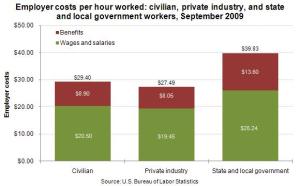 Hey! Come back!
Hey! Come back!
Before you roll your eyes on this one, start having flashbacks to terrible experiences with calculating standard deviations, or trying to wrap your head around multiple regression analysis, and then run screaming from this post, this is not about you trying to become an expert at statistics! Trust me!
It’s about you understanding how analytical tools and methods can help HR have an impact on applying talent to strategic success. Besides, no less than Josh Bersin said at the recent HR Technology Conference® 2009 Talent Management Analyst Panel, “Get used to it.” And that’s a good way to look at it. Too often, HR has been shut out of strategic input because of the perception that it doesn’t speak the language of analytics sufficiently to measure and understand the relationships between various parts of the business (e.g. Human Capital) and profit (or whatever financial result you wish.) Once you have that better understanding, it will enable you to make a stronger case for why HR can provide valuable input and leadership in business strategy and execution.
By now, we’ve had the importance of measuring pretty well pounded in, particularly in the context of Finance. Increasing your financial intelligence is key to participating more in driving strategic decision-making around applying talent to improve business results. Being able to show to senior management the link between what you know about your company’s talent to financial results entails both measuring talent in terms of levels of performance, competency, skills, connectedness, etc. as well as measuring relationships between those measures and the other parts of the business that drive financial performance. What do analytical skills have to do with measuring those parts and their relationships?
Measuring is not Counting
To help answer that question, let’s take an example from “How to Measure Anything: Finding the Value of Intangibles in Business” by Douglas W. Hubbard. Picture the problem of measuring the population of fish in a lake; let’s say in order to know if a restocking effort was successful or not (a good ROI problem). A lot of people will say, “Drain the lake and count the fish.” They could then report there were exactly 22,573 fish and we’ll say that confirms the restocking investment was a success, although all the fish are now dead.
A better approach (certainly for the fish) entails using analytical methods to estimate the population of fish in the lake. If there is sufficient confidence in the estimate of the population before and after the restocking effort, you will be able to tell if the restocking effort was a success or not. Did you have to know every tiny detail of statistics to make a decision based on these estimates and the confidence level? No. How about to show the before and after picture to some “lake executive” who had to give the green light on the restocking effort? No. You just had to know enough about analytical methods to know that the application of them made sense in this case, and either determine you made the right call or get the point across to that executive.
As the authors of “The Differentiated Workforce: Transforming Talent into Strategic Impact” quoted a general manager, “I couldn’t do a regression analysis, but I knew what one was. And the results…made sense to me.” Further, they write, “Improved analytic literacy has a direct impact on the decision making at several levels in a typical HR organization…At the highest level, improved analytical literacy changes the perspective on the financial resources committed to HR…they consider a significant portion [of the HR budget] an investment.”
Principles of Uncertainty
HR labors under the false assumption that everybody else has “precise numbers” and there seems to be a perception that HR can’t come up with the “hard numbers.” The classic story is of the CEO asking the head of HR if they know the company’s headcount and the response is wishy-washy. The thinking is that people are either working for the company or they are not, so what’s the problem? What’s the count? Sure, in a company of a few hundred people, you might actually have a very precise figure. However, we know that depending on the industry, economic conditions, etc. as the number of employees gets larger, it gets a bit trickier to know the headcount with precision. There is a lot going on and even if you are using an HRMS system, the simple fact that humans are involved and entering transactions (or not), makes the number transient and constantly changing. In other words, one minute, you could see 59,268 and a minute later see 59,273.
This is not that different from the folks in Accounting keeping track of Receivables, the folks in Production keeping track of Inventory, or the folks in Development keeping track of Project Completion. In the case of Accounting and Finance, it gets even more interesting when it’s time to report; for instance, general accounting principles require the company to estimate the amount of Receivables that will be uncollectible and there isn’t any hard and fast equation for doing that. Different methods are used to estimate these values, some of them analytical.
The point, as Hubbard writes in his latest book, “The Failure of Risk Management: Why It’s Broken and How to Fix It” is that measurement is better understood as the reduction of uncertainty about the value of something. Once you see it that way and gain enough analytic literacy to feel comfortable with the results from those tools and methods, you’ll be able to move forward more readily with driving and demonstrating positive impact on strategic business results.
Photo by The Michael
The Failure of Risk Management: Why It’s Broken and How to Fix It
 Effectively distributing compensation using limited budget in your disposal is always challenging. Your strategy can be to give performers much higher increases than rest of the people as it may still result in improved engagement and retention as concluded by some research results.
Effectively distributing compensation using limited budget in your disposal is always challenging. Your strategy can be to give performers much higher increases than rest of the people as it may still result in improved engagement and retention as concluded by some research results.





 Hey! Come back!
Hey! Come back!



